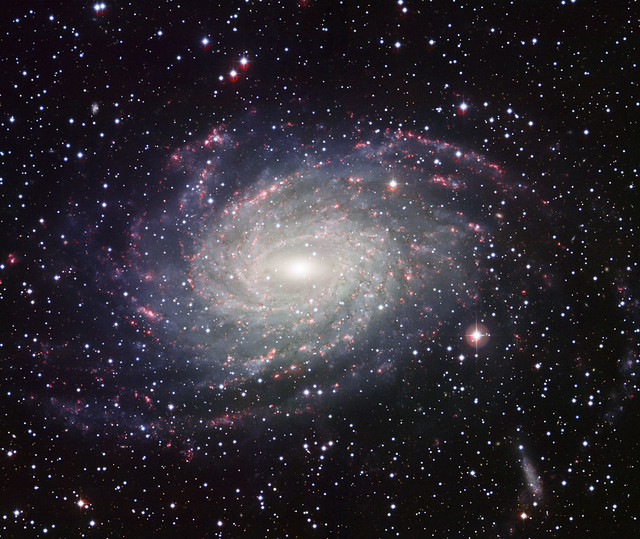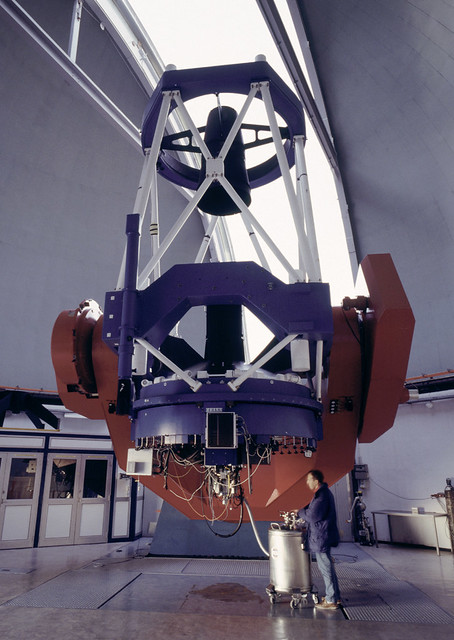AT&T Government Solutions announces series of task orders worth up to $48M to provide satellite-based voice, video, and Internet services to deployed military personnel overseas.
[Tech Zone 360 – 06/03/2011]

TS2 of Poland introduces to the global market satellite connections dedicated to foreign correspondents, photo reporters, and journalists for international broadcast of video, voice, or data files.
[Business Wire – 06/03/2011]
atrexx introduces new service platform specifically targeted at demand for broadband services in highly fragmented South American region.
[SatNews – 06/02/2011]
Eutelsat’s KA-SAT high throughput satellite goes live, bringing broadband speeds of up to 10Mbps to homes across Europe.
[telecoms – 06/02/2011]
India to launch GSAT-12, with 12 C-band transponders, on a PSLV C-17 rocket from Sriharikota in July.
[Hindu – 06/02/2011]
Sea Launch AG to launch the Intelsat 18 communications satellite in the second half of 2011.
[SatNews – 06/02/2011]
Azerbaijan, Turkmenistan, and Venezuela all have oil wealth and ambitions in space, with two of the three having ordered satellites and the third starting its own space agency with hints of a satellite order in the works.
[Satellite Spotlight – 06/02/2011]
India gets multi-million dollar contracts to launch 12 foreign satellites into low earth orbits over next two years.
[Kerala next – 06/02/2011]
Spain’s satellite communications service provider ERZIA Tech strikes deal with MTN Satellite Communications of the U.S. to install Rapid Deployment Systems mobile VSAT solution on Spanich research vessel BIO Hesperides.
[TMCnet – 06/02/2011]
Skyware Global announces 69cm Ka-band Outdoor Unit, offering high-performance, cost-effective integrated solution for broadband internet and enterprise broadband solutions.
[SatNews – 06/02/2011]
Cree demonstrates industry’s first C-band GaN HEMT MMIC high power amplifier for satellite communications.
[Business Wire – 06/02/2011]
SES ASTRA announces availability of Nickelodeon HD and Comedy Central HD via HD+ in Germany, comprising ten free TV HD channels.
[SatNews – 06/02/2011]
Cape Town-based telecommunications provider Metacom develops low-cost low-rate satellite communications solution for industrial and commercial applications in remote areas of South Africa.
[Cape Business News – 06/02/2011]
Hughes Network Systems makes available the Hughes Emergency Solutions, to provide robust,, expedited broadband Internet connectivity for business and government when disasters strike, in anticipation of the hurricane season.
[SatNews – 06/02/2011]
Russian Federal Space Agency Roscosmos officials claim Russian GLONASS beats American GPS in accuracy.
[ibn live – 06/02/2011
Navigation Maritime Bulagare reports significant communication cost savings and management efficiencies since retrofitting its fleet of 45 bulk carriers with Iridium OpenPort.
[SatNews – 06/02/2011]
U.S. government trade officials criticize Russian Ministry of Transport for proposing laws requiring Glonass equipment to be installed in all new cars sold in Russia, calling them “unfair.”
[Satellite Today – 06/02/2011]
MDA sells Radarsat-2 emergency support services to Russian Government.
[Satellite Today – 06/02/2011]
Sofradir is awarded contract to provide shortwave infrared arrays for the TROPOMI/S5 mission as part of the GMES joint undertaking by the European Commission and the European Space Agency.
[SatNews – 06/02/2011]
ITT is recognized by NASA with Outstanding Team of the Year award for superior efforts and commitment to excellence in building one of world’s most advance weather instruments – the Advance Baseline Imager for the GOES-R program.
[SatNews – 06/02/2011]
GlobeCast America CEO David Justin steps down.
[Satellite Today – 06/02/2011]
Boeing establishes Exploration Launch Systems Engineering and Integration office in Titusville Florida near Kennedy Space Center to support operational readiness of NASA’s next launch system currently under study.
[SatNews – 06/02/2011]
European Satellite Operators Association discusses important role of satellite services in delivering 100% broadband coverage in Europe at recent meeting.
[SatNews – 06/01/2011]
India to launch 12 foreign satellites in next two years.
[India Times – 06/01/2011]
SES WORLD SKIES U.S. Government Solutions announces completion of Dynamics Testing on the Commercially Hosted Infrared Payload for the SES-2 satellite under construction.
[SatNews – 06/01/2011]
Russia to accelerate GLONASS navigation satellite launches to give its GLONASS navigation system full global coverage capacity by the end of the year according to a senior government official.
[The Hindu – 06/01/2011]
Gilat Satcom launches Shiron hub in Zimbabwe, expanding it reach throughout this African region.
[SatNews – 06/01/2011]
KORE Wireless Group completes acquisition of Melbourne-based Mach Communications, enabling KORE to better respond to global M2M market demand with its integrated cellular and satellite capabilities.
[Benzinga – 06/01/2011]
Spacecom announces that Poland’s TTComm S.A. has signed a number of long-term agreements to lease capacity from the AMOS satellite fleet at 4 degrees West.
[SatNews – 06/01/2011]
Azerbaijan buys first communication satellite, setting a 2012 launch date.
[Bloomberg – 05/31/2011]

Nigerian government, considering building a second satellite, may require the builder to transfer technology, training Nigerian engineers to become satellite builders.
[Vanguard – 05/31/2011]
O3b signs multi million-dollar deal with South Africa-based Mavoni Technologies to roll out broadband to underserviced municipalities in the Northern Cape, Limpopo, and Mpumalanga.
[Engineering News – 05/31/2011]
Multinational Naval coalitions using KVH TracPhone V7 for counter-piracy operations.
[GlobeNewswire – 05/31/2011]
World Surveillance Group acquires Global Telesat, a provider of satellite based tracking and communication solutions to the U.S. government and commercial customers.
[SYS-CON MEDIA – 05/31/2011]
ST Engineering establishes ST Electronics Satellite Systems in a joint venture with Nanyang Technological University and DSO National Laboratories to design, develop, and produce advanced Earth Observation satellites.
[SatNews – 05/31/2011]
NASA selects Fibertek to design, develop, fabricate, test, and deliver laser systems for ICESat-2 mission.
[Satellite Today – 05/31/2011]
SES S.A. signs agreement with YellowSat, a French start-up company that provides Internet connectivity to enterprises, governments, and institutions in Africa, for inclined orbit capacity on NSS-703.
[SatNews – 05/31/2011]
Orbcomm sings partnership deal with Field Intelligence and Controls to provide global data communications.
[Satellite Today – 05/31/2011]
Thailand to launch its sixth satellite, Thaicom 6, in 2013.
[Reuters – 05/30/2011]
SkyVision launches iDirect Evolution network to expand VSAT coverage in Africa.
[PR Newswire – 05/30/2011]
SES joins forces with Kenyan television and broadband operator Wananchi to launch new Direct-to-Home line-up called Zuku TV in East Africa.
[WebWire – 05/30/2011]
Satellite firms see opportunity in Pentagon as increasingly tight budgets will translate into more business for commercial satellite programs.
[Washington Post – 05/29/2011]
NASA missions occupy entire Atlas 5 rocket launch manifest for rest of 2011.
[Spaceflight Now – 05/27/2011]
WBMSAT PS satellite communications systems services









